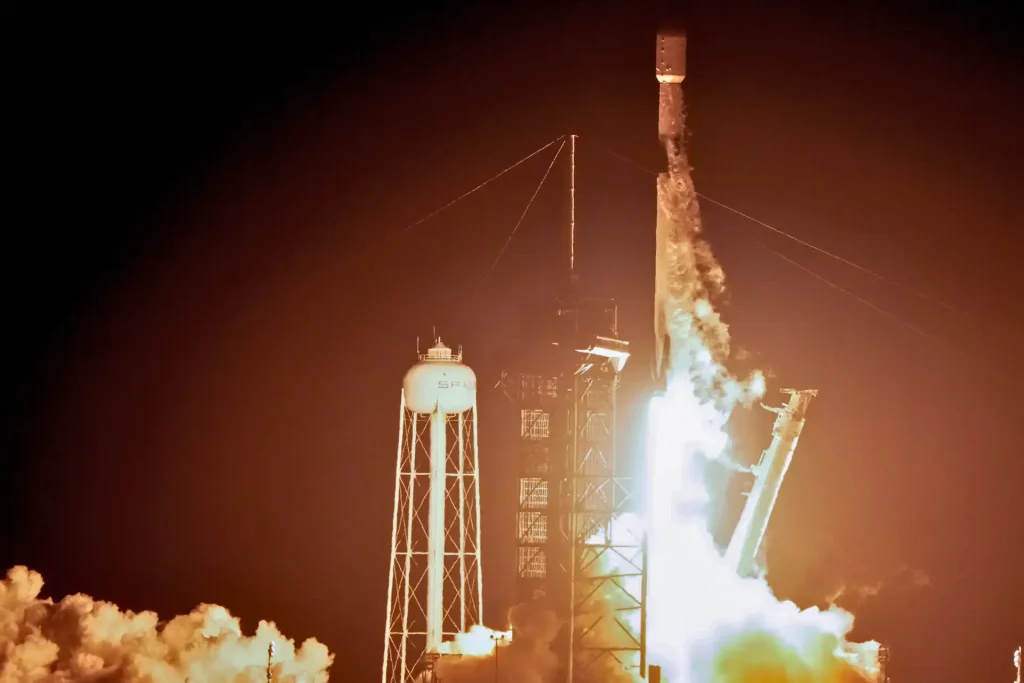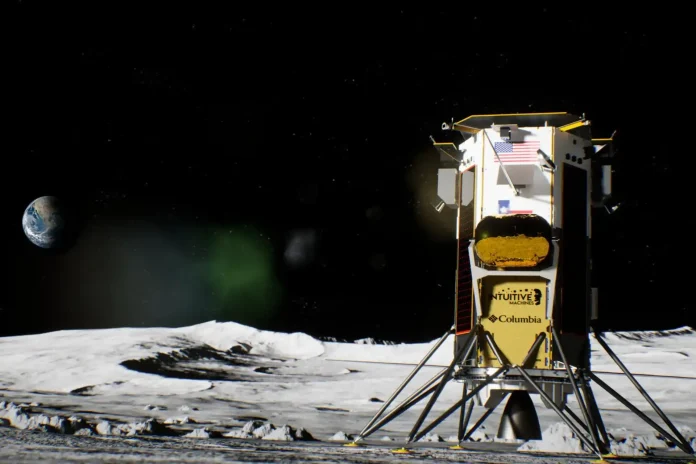The SpaceX Falcon 9 rocket successfully lifted off on 15 Feb at 1:05 AM EST (6:05 AM UTC) from Kennedy Space Center Launch Complex 39A, carrying Intuitive Machines’s IM-1 SpaceX lunar lander named “Odysseus” on a new mission to the Moon. This marks the first of at least three robotic lunar landing missions under NASA’s Commercial Lunar Payload Services (CLPS) program, aiming to use private spacecraft for lunar exploration and research.
New Era in Moon Exploration With SpaceX Lunar Lander
The IM-1 mission signifies a step towards exciting lunar exploration, shifting the paradigm from only government-led adventure to collaborations with private companies following the steps of Japan’s Moon Lander, SLIM. “Today’s launch represents a new era in lunar exploration,” said Kathy Lueders, NASA Associate Administrator for Science. “CLPS is enabling innovative partnerships and opening up the lunar surface to more science and exploration than ever before.”
Odysseus Embarks on Its Journey
The hexagonal, four-meter-tall lander carries six payloads for NASA, including instruments to investigate the lunar surface, measure radiation levels, and explore communication capabilities near the Moon’s South Pole. Additionally, it contains several commercial payloads for space agencies and companies worldwide.
Related: Artemis 2 Mission Of Returning Humanity To The Moon
“This mission paves the way for Artemis and future crewed missions to the Moon,” said Intuitive Machines’ CEO Dr. Oren Shapira. “Odysseus will demonstrate our lander’s capabilities and gather valuable data that will be crucial for establishing a sustainable lunar presence.”

A Challenging Trajectory
Odysseus will spend four days in transit before entering a lunar orbit. The critical landing at Malapert crater near the South Pole is planned for February 22nd. This region presents unique challenges due to its permanently shadowed areas and extreme temperature variations.
“Landing on the Moon is never easy, and this mission adds the complexity of a new spacecraft and a challenging landing site,” said NASA’s CLPS project manager Jim Reuter. “However, we are confident in the capabilities of Intuitive Machines and SpaceX, and we are excited to see what Odysseus can achieve.”
Key Points of the Mission
- First Falcon 9 launch from Kennedy Space Center’s iconic Launch Complex 39A since the Apollo missions.
- First American spacecraft aiming for a soft lunar landing since Apollo 17 in 1972.
- Valuable scientific data on the lunar South Pole for Artemis program planning.
- Demonstration of capabilities for future commercial lunar missions.
The IM-1 mission marks a significant milestone in both lunar exploration and space industry collaboration after SLIM’s successful lunar landing. As Odysseus embarks on its journey, the world awaits its successful landing and the scientific discoveries it promises to reveal. This mission highlights the exciting potential of private involvement in space exploration and paves the way for a future where humankind returns to the Moon and ventures even further.
related: Blue Moon Lander Contracted for NASA Artemis 5 Mission
Where Can You Stream The Live Updates?
While the launch marks an important success, the mission’s journey is far from over. The public can follow the lander’s progress through various channels, including:
- NASA’s CLPS website: https://www.nasa.gov/commercial-lunar-payload-services/
- Intuitive Machines’ website: https://www.intuitivemachines.com/
- SpaceX’s website: https://www.spacex.com/
This historic launch of the SpaceX lunar lander marks the beginning of a new chapter in lunar exploration, fueled by innovation and collaboration. As Odysseus navigates its path to the Moon, the world eagerly awaits the discoveries and advancements it will bring forward.



